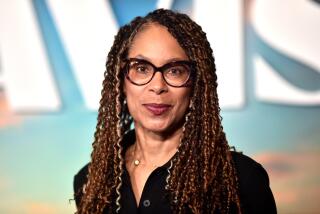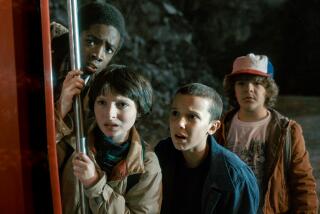The Year in Television: Robert Lloyd
In the beginning was the television set, and everything that was called television came through it from out of the air, antenna to antenna. Then the pictures began to arrive by cable and satellite, and that was television too. And then the Internet rolled in, with its viral clips and webisodes, and a growing number of new gadgets vied to do what your TV did — your telephone, your tablet, your Roku or your Xbox, each with its own new opportunity.
This medium is in flux, fragmented and competitive and uncooperative for now but on the edge of its biggest alterations since the advent of cable. To my mind, the story of 2011 was not anything shown on television but television itself: the announcement Netflix had made a deal to stream new, as yet uncreated episodes of “Arrested Development,” the “Community” of its generation — that, essentially, Netflix, a rental company, had declared itself a new network, ready to finish what Fox started.
And no mere aggregator of bite-sized Web series and videos but a producer of full-blown, network-style TV shows. The company’s target is not the distracted mouse-clicker, but consumers who already use devices other than TVs to watch television. (Netflix Chief Content Officer Ted Sarandos said earlier this year that TV accounts for as much as 60% of the material the company streams to subscribers.)
Indeed, Netflix, outbidding HBO, had already put down $100 million for 26 episodes of a new political drama, “House of Cards,” from David Fincher and Kevin Spacey. It has also made deals to show “Orange Is the New Black,” co-created by “Weeds” creator Jenji Kohan, and the Scandinavian import “Lilyhammer,” a sort of Mafia “Northern Exposure” with Steven Van Zandt as a mobster in witness protection in small-town Norway.
As with premium cable before it, the model is to create prestige and sell viewers access to exclusive material to attract and maintain subscribers. The Google-owned YouTube, meanwhile, is fronting some $100 million to create 100 channels, with producers reported to include Madonna, Amy Poehler, Deepak Chopra, Rainn Wilson, Shaquille O’Neal, Slate, Reuters and World Wrestling Entertainment. And Hulu — which recently struck an “exclusive digital syndication” deal for “Community,” the “Arrested Development” of its generation — has been acquiring British series not otherwise available here: the excellent restaurant comedy “Whites,” “Misfits” (“Skins” plus super powers), the adult puppet show “Mongrels.”
This was also a year, significantly, in which, according to Nielsen, fewer people even owned a TV. The drop, from 98.9 to 96.7% of American households, was not precipitous — basically, it’s the difference between saying “Almost every home in the United States has a television” and “Almost every home in the United States has a television.” But it is true that a new breed of viewer gets all the TV he or she needs by laptop or tablet, off a disc or out of the cloud and that this fact will shape the business as it goes forward.
I am projecting, I know, into the unpredictable future, but this is where it starts. The old kingdom of television has established its beachheads in the new world of the Web, to enrich its brand and shop its wares, and to extend the breadth and reach and shelf life of its over-the-air programming. But this Netflix mutation represents a new species, one that enlarges the definition of what and who will make real TV.
Whether it leads to innovative work or just to more of the plastic foam peanuts that already fill so much space on TV and around the Internet, time will tell, but fresh venues do encourage fresh ideas. In the beginning was the television set, but we are way past that now.
More to Read
The complete guide to home viewing
Get Screen Gab for everything about the TV shows and streaming movies everyone’s talking about.
You may occasionally receive promotional content from the Los Angeles Times.







